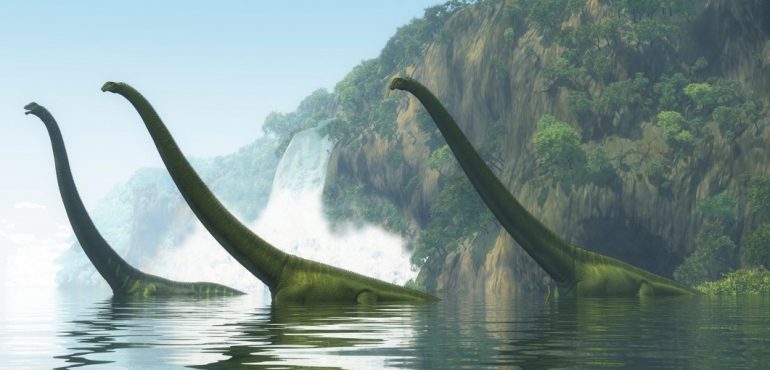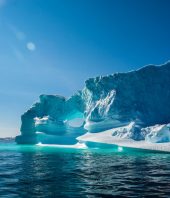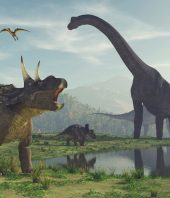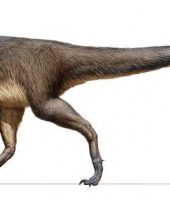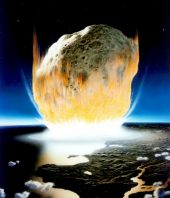There was once a time when the great southern landmass was covered in forests and dinosaurs roamed free. How could such an icy wilderness once have been so warm that it could support Earth’s most gigantic creatures?
To understand this we have to go back in geological time. Antarctica was ice free during the Cretaceous Period, lasting from 145 to 66 million years ago. That long ago may seem unfamiliar but we know it because it was the last age of the dinosaurs before an asteroid hit the earth and ended their time on this planet.
During this time period there were forests at both poles. Fossils of trees and cold-blooded reptiles have allowed scientists to build up a picture of what the climate was like. Cold-blooded reptiles need the warmth of the sun to survive; today we see them basking in the sun to warm up during the day. At the poles where the sun disappears during the winter months it must have been warm enough for them to survive through the darkness.
Scientists also use the shells of fossil organisms that lived in the ocean called foraminifera to understand past climate. By analysing the chemistry of their shells and knowing the age intervals when different species lived they can get an estimate of ocean water temperature during that time.
Dr Brian Huber from the Smithsonian Museum of Natural History investigates the Cretaceous with a particular focus on deep-sea sites around Antarctica. He explains; “foraminifera provide some of the best records because you've got both bottom dwelling ones living in the sediments and recording bottom ocean temperatures and then you've got the planktonic ones that live in the top fifty meters of the ocean recording atmospheric temperatures. When you couple those records through time and analyse the shells from different parts of the ocean all over the world, you get a really good idea of the evolution of climate.”
Huber elaborates that what they found in the Southern Ocean around Antarctica was hard to believe at first because it just seemed too warm; “we found temperatures of 30C at 58 degrees south,” close to the Antarctic Circle.
These high temperatures occurred during the middle of the Cretaceous known as the ‘Cretaceous Hothouse’ - a hot greenhouse effect caused by increased carbon dioxide in the atmosphere. But what happened in the Cretaceous to create a world where there were trees and dinosaurs roaming Antarctica unlike the barren ice fields of today?
Huber explains; “what we know about the mid-Cretaceous in particular is that we had much faster rates of sea floor spreading and so more volcanic sources of CO2.” Huber and colleagues are still investigating whether the ‘hothouse’ occurred as a result of a major amount of volcanism erupting CO2 and creating a greenhouse blanket that warmed the earth.
We all know the climate changes, it has in the past, it is changing now and it will in the future, but what is different about what we are doing now compared to what happened in the Cretaceous? Could Antarctica be ice-free again soon?
“It's really an unprecedented rate and magnitude of change compared to geologic events that we know of from the past. We're releasing hundreds of billions of tons of CO2 into the atmosphere in just a matter of decades. Volcanoes can't produce that amount of CO2 in such a short time span even if they are huge volcanoes;” says Huber.
In terms of the future, Huber suggests; “I think what we'll see possibly in decades, maybe centuries is what are called ice streams that start flowing faster and it could be that West Antarctica in particular starts to deglaciate. Given the rate at which ice flows, we won't see [the whole of] Antarctica deglaciate in a matter of decades. Glaciologists predict that once you start raising sea level you start getting a positive feedback where that allows ice to flow faster and sea level rises faster, so then it just sort of keeps going. So yes I think the signs are there already.”
We may not have dinosaurs roaming Antarctica again, but we can’t rule out it being ice free in the future, and we have no way of knowing what that would be like for humans as we have never lived on Earth when there wasn’t ice at the poles.
Source: BBC Earth, Full Article

